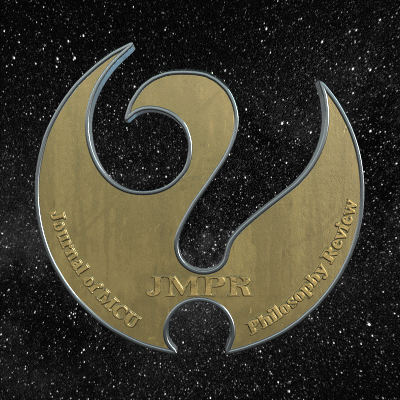The Alleviation of Model Kāmaguṇa Kamaguna from the Usage of Buddhist Monks' Information and Communication Technology in Current Society
Main Article Content
Abstract
This research article has objectives were purposely made: 1) to study Buddhist monks’ the behaviour in using technology in the present society, 2) to study and develop the mental training model in accordance with four foundations of mindfulness to reduce Kāmaguṇa of the Buddhist monks in using technology, and 3) to present the alleviation model of Kāmaguṇa of Buddhist monks from using technology in the present society. This research employed the qualitative research methodology done by collecting data from field research through in-depth interview and non-participative observation. The research results showed that: In the present society, the Buddhist monks’ behaviour in using technology is somehow inseparable from their context of living life where its usage can be divided into three aspects: 1) in the education 2) in the communication 3) in the entertainment. The current usage of technology by monks has negative effects in three ways: 1) stimulating passion, 2) mingling with groups, and 3) indulging in entertainment. In the development of the mental training model in accordance with four foundations of mindfulness to reduce Kāmaguṇa of the Buddhist monks in using technology, mindfulness on four bases needs to be focused: 1) one should be mindful on body and its behaviour, 2) one should be mindful on feeling, 3) one should be mindful on one’s consciousness, and 4) one should be mindful on the functioning sense-bases. Hence, to gain the mentioned bases, Buddhist monks in the present time need to get mind and themselves trained through the holistic manner. The alleviation of Model of Kāmaguṇa from the usage of Buddhist monks’ information and communication technology in current society needs three types of structural competency model where it consists in the followings: 1) being full awareness, 2) it needs good friendship 3) it needs the effectiveness of the process where time, determination and study are used so that the holistic training.
Article Details

This work is licensed under a Creative Commons Attribution-NonCommercial-NoDerivatives 4.0 International License.
บทความที่ได้รับการตีพิมพ์เป็นลิขสิทธิ์ของวารสาร มจร ปรัชญาปริทรรศน์
ข้อความในบทความที่ได้รับการตีพิมพ์ในวารสาร ถือเป็นความรับผิดชอบของผู้เขียนบทความ และข้อคิดเห็นนั้นไม่ถือว่าเป็นทัศนะและความรับผิดชอบของกองบรรณาธิการวารสาร มจร ปรัชญาปริทรรศน์
References
กมลลาศ ภูวชนาธิพงศ์ และคณะ. (2559). ค่านิยม และพฤติกรรมต้นแบบใช้เครือข่ายสังคมออนไลน์ตามแนวพุทธจิตวิทยาบูรณการของสามเณร. รายงานการวิจัย. สถาบันวิจัยพุทธศาสตร์: มหาวิทยาลัยมหาจุฬาลงกรณราชวิทยาลัย.
มหาจุฬาลงกรณราชวิทยาลัย. (2539). พระไตรปิฎกภาษาไทย ฉบับมหาจุฬาลงกรณราชวิทยาลัย. กรุงเทพมหานคร: โรงพิมพ์มหาจุฬาลงกรณราชวิทยาลัย.
แทนพันธ์ เสนะพันธุ์ บัวใหม่. (2559). พฤติกรรมการใช้เฟซบุ๊กของพระสงฆ์ไทย. วารสารศิลปะศาสตร์ มหาวิทยาลัยสงขลานครินทร์ วิทยาเขตหาดใหญ่, 8(2), 202.
พระมหาบุญเลิศ ธมฺมทสฺสี และคณะ. (2548) ศึกษาปรากฏการณ์วิธีสอน วิปัสสนากัมมัฏฐานตามหลักสติปัฏฐานสี่ในปัจจุบัน. รายงานการวิจัย. บัณฑิตวิทยาลัย: มหาวิทยาลัยมหาจุฬาลงกรณราชวิทยาลัย.
พระปลัดสมภาร สมภาโร (ทวีรัตน์). (2564). การปฏิบัติวิปัสสนากัมมัฏฐษนที่ส่งผลต่อการพัฒนา สุขภาพจิตของบุคคล. (ดุษฎีนิพนธ์พุทธศาสตรดุษฎีบัณฑิต). บัณฑิตวิทยาลัย: มหาวิทยาลัย มหาจุฬาลงกรณราชวิทยาลัย.
สมเด็จพระพุทธโฆษาจารย์ (ป. อ. ปยุตฺโต). (2564). พุทธธรรม (ฉบับปรับขยาย). (พิมพ์ครั้งที่ 55). กรุงเทพมหานคร: โรงพิมพ์มหาจุฬาลงกรณราชวิทยาลัย.


